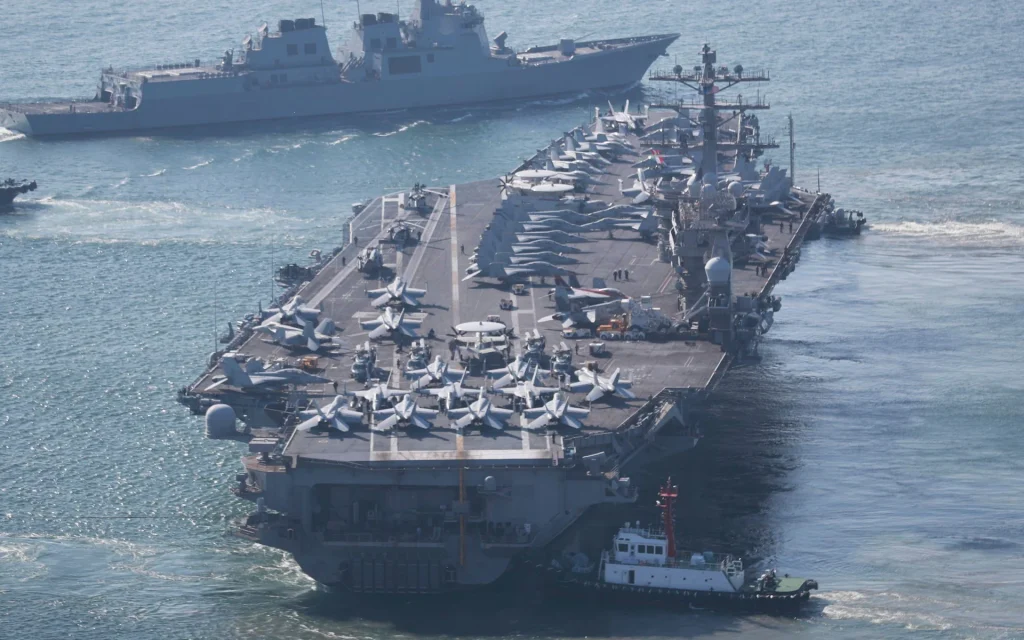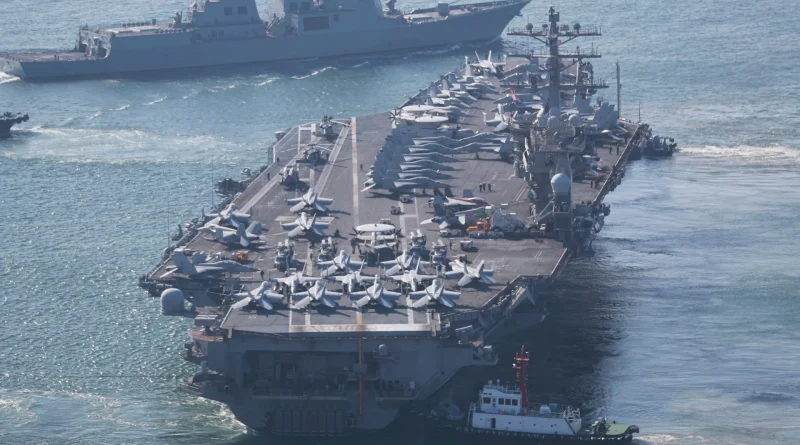US Navy Helicopter & Fighter Jet Crash in South China Sea During Final Deployment of USS Nimitz
crashed into the South China Sea in separate but nearly simultaneous incidents, the U.S. Pacific Fleet said.
Incident details
At about 2:45 p.m. local time, an MH-60R Sea Hawk helicopter assigned to Helicopter Maritime Strike Squadron 73 (“Battle Cats”) operating from the USS Nimitz went down in the waters of the South China Sea.
Roughly 30 minutes later, at about 3:15 p.m., an F/A-18F Super Hornet fighter jet from Strike Fighter Squadron 22 (“Fighting Redcocks”) also crashed while conducting “routine operations” from the same carrier.
Business Standard
In both incidents, all personnel on board were safely rescued and are in stable condition. The helicopter’s three crew members were recovered by search-and-rescue assets; the fighter’s two crew ejected and were retrieved.
The U.S. Pacific Fleet has launched investigations into both crashes. The causes remain undetermined at this stage.
Strategic context
The South China Sea is a highly contested region, claimed in large part by People’s Republic of China but also by multiple Southeast Asian countries, and routinely patrolled by U.S. naval forces to uphold freedom of navigation.
The USS Nimitz is currently on its final deployment before decommissioning in 2026 and was returning from operations in the Middle East when the incidents occurred.
The timing also coincides with Donald Trump’s Asia-tour, including expected talks with China, heightening attention around U.S. presence in the region.
Implications & considerations
Two crashes from the same carrier in such brief succession are unusual; while human-error or mechanical faults may be factors, the coincidence raises questions about maintenance, operational tempo or other systemic issues.
No immediate indication suggests hostile action or adversary involvement. The Navy’s initial statements describe the operations as “routine.”
Given the strategic sensitivity of the region, even non-fatal incidents can have diplomatic or signalling consequences, especially when paired with high-level visits and regional tensions.
The recovery operations were successful and swift, which reflects preparedness and robust rescue planning, but investigators will look beyond the immediate rescue to root‐causes and broader risk-management protocols.
What happens next
The U.S. Pacific Fleet leads the investigations; findings may influence carrier-airwing operations, maintenance schedules, and flight-safety protocols. The Navy may also review sortie scheduling or operational risk levels during carrier-strike-group deployments in contested regions.
Updates are expected once the investigations yield preliminary findings. Until then, the incident remains a reminder of the risks inherent in routine naval aviation—even outside combat operations





